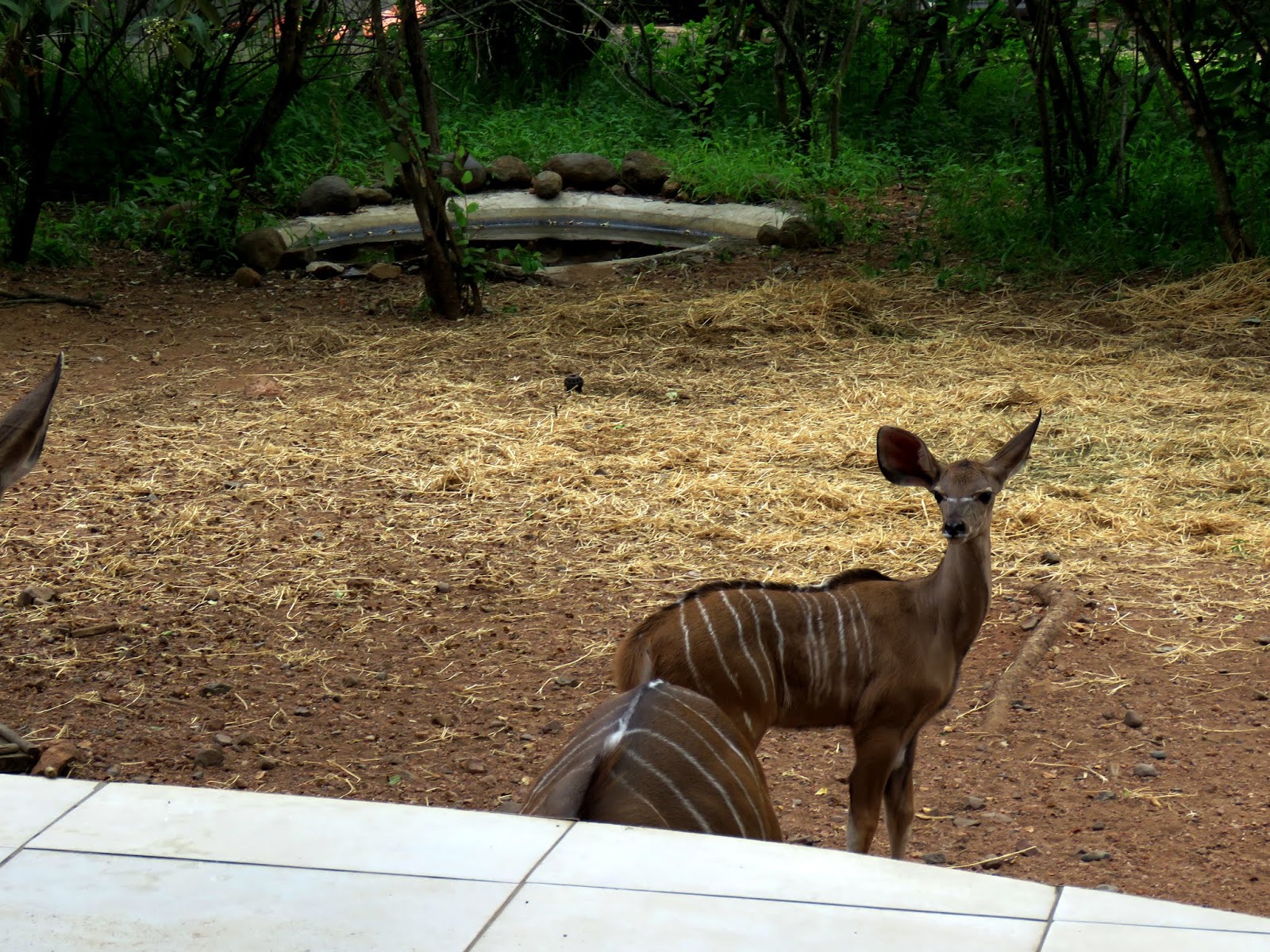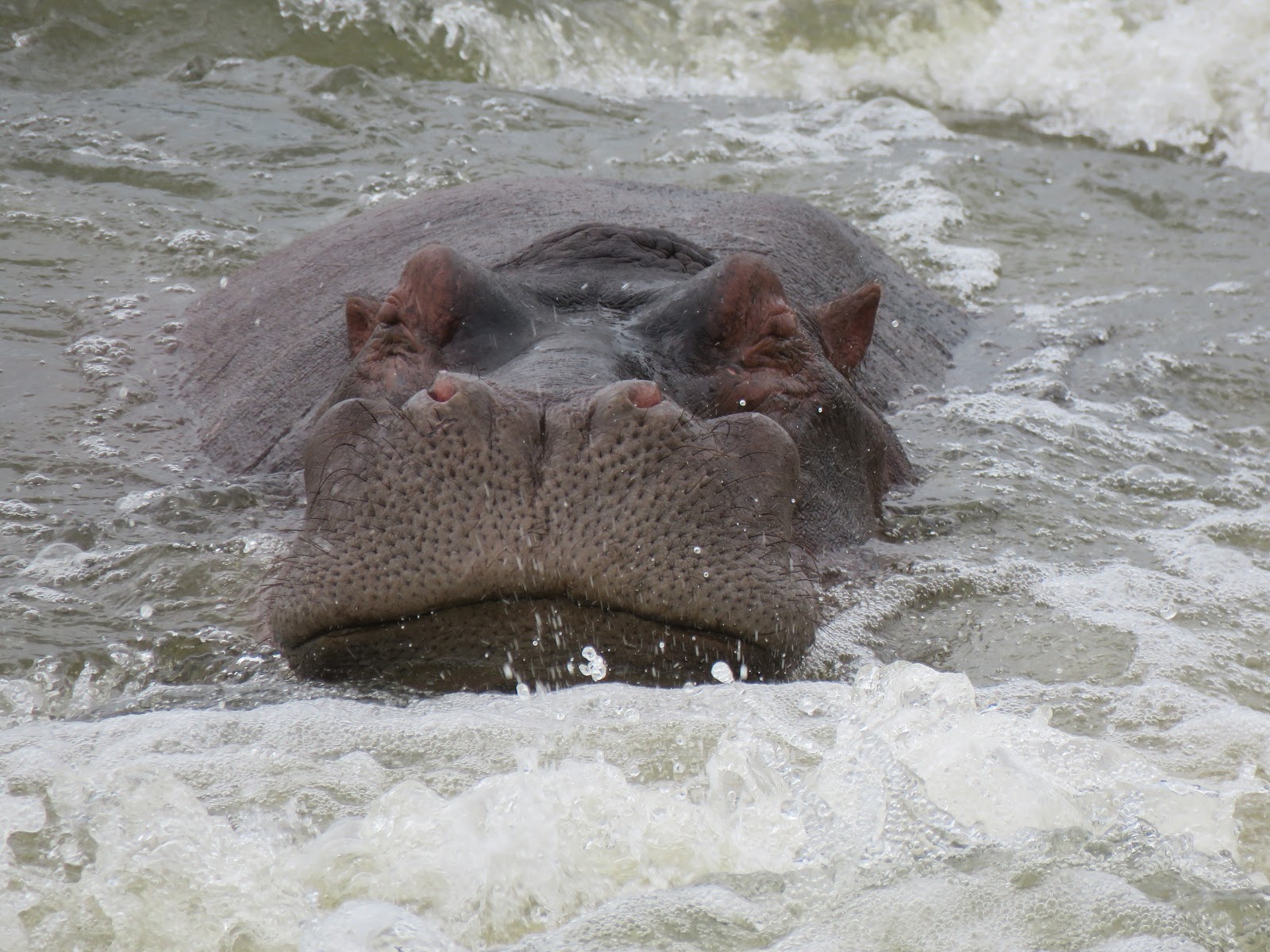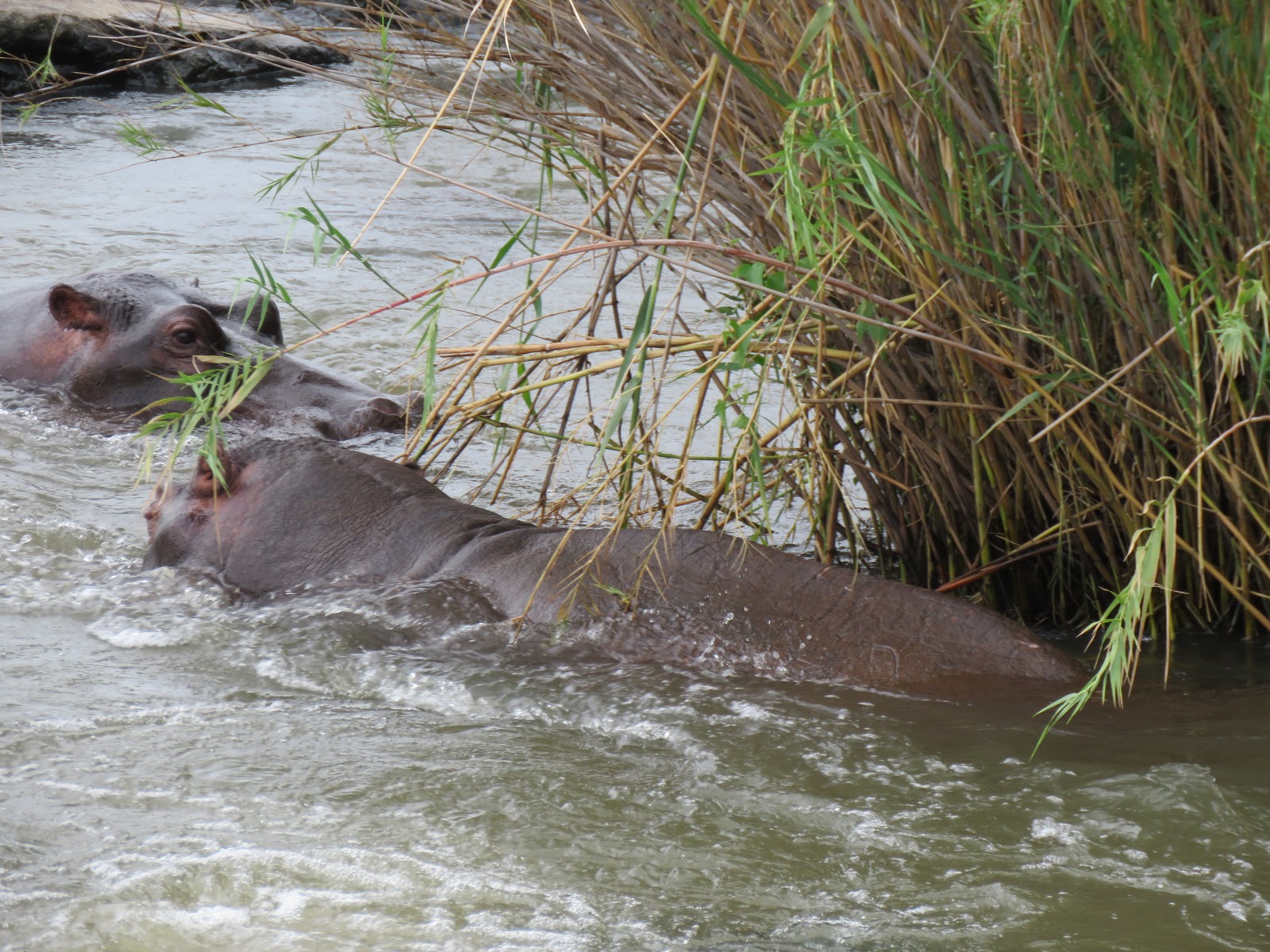 |
| ‘”Hot tub by candlelight” with Little lounging in the cement pond on a hot evening in the bush. |
“Sighting of the Day in the Bush”
 |
| Öne of the four piglets of the Mom and Babies family, gaining some independence, napping alone in the lucerne in our garden. |
Today’s heading may have fooled a few of our readers, thinking we may have some suggestive hot tub by candlelight experience to share with photos. Sorry, but it wasn’t us! Our boy “Little” stopped by at dusk for a soak in the warm water in the cement pond after a scorching day.
 |
| Our regular Mr. Bushbuck, who visits daily, is sharing pellets with our regular visiting female duiker, who are very shy and skittish around other wildlife. |
We have a soaking-type tub in the en suite master bath and have yet to use it. My days of taking baths are long over since I don’t care to use so much water while living in the bush or anywhere else in the world, for that matter. Such a tub requires the use of 302 liters (80 gallons of water).
 |
| We tossed out some lettuce leaves, which they also shared. |
What a waste of resources that would be, taking a soak once a day! Doing so would use 110,230 liters (29,200 gallons) per year. Those things should be outlawed unless absolutely proven necessary for certain medical conditions. Water shortages are evident here in Africa, all over the world, and even in the USA.
 |
| Suddenly, they stopped eating when they heard a sound. |
Anyway, regarding today’s main photo, we had the table candlelights lit to repel mosquitos and flies that ultimately precipitated the above photo. Each night we make a feeble attempt to keep the flies at bay as we attempt to have dinner before dark.
 |
| Ken’s photo of who we call Loud Mouth must be the loudest frog on the planet. When he’s making his noise, we have actually to yell to speak to one another. |
If we’d be patient and wait to eat dinner until it’s fully dark, the flies would be gone. But it’s a toss-up. We’re hungry before dark since we don’t eat much during the day. Why change our dining habits due to some pesky flies?
 |
| He’s no exotic frog, only a common tree frog often found near water in Africa. See the diagram below for the difference between a frog and a toad. (Ken’s photo). |
As I sit here on the veranda this morning at 11:00 am, the flies are bombarding me. Also, they are biting flies, leaving a nasty sting that can itch for hours. We assume the flies and the mozzies are a result of the recent rains, so we’ll put up with it.
We’re grateful for the rain for our wildlife friends, greening the vegetation vitally necessary for their survival. Last night there was a perfect soaking rain that continued through most of the night.
 |
| Warthogs enjoy hanging out with other “diners” such as kudus to ensure they get the maximum number of pellets. |
This morning, we awoke to many visitors to our garden, waiting for a tasty morning treat. It’s comforting to know that when we depart in 19 days, the vegetation will easily sustain the wildlife that’s been visiting us over the past year.
 |
| Handsome young male kudu requesting more pellets with the proverbial stare. |
However, that fact doesn’t diminish the sadness we feel when thinking about them showing up day after day, night after night, and we won’t be here. We knew this time would come, and we’re grateful they will have plenty to eat without our steady stream of pellets, apples, carrots, and other good-for-them vegetables we share each day.
 |
| This was the smallest/youngest kudu we’ve seen in the garden. |
And so it goes, the days and nights sail by faster than I ever imagined, a giant clock ticking in my head. Yes, I’m treasuring every moment. Yes, I’m looking forward to the next adventure. And, above all, this has been a year we’ll never forget, never to be duplicated, never to be lost among the excitement of other magnificent places we’ll visit in this fantastic world.
 |
| Female duikers have one little tuft of a horn while the males have two. |
Enjoy your day, your night, and each moment in between.
Photo from one year ago, January 26, 2018:
 |
| A small group of Gentoo Penguins heading out to sea for a morning swim and hopefully a bite to eat. For more adorable penguins, please click here. |







































































































